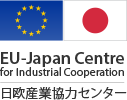
MLIT draws up new application guidelines for tendering and contracting of public works
The Ministry of Land Infrastructure, Transport and Tourism (MLIT) has drawn up application guidelines systematically outlining multiple tendering and contracting methods and concrete examples of these procedures in May 2015. In the guidelines, the characteristics and merits/demerits for each of the procedures are explained. They are meant to assist government organizations, including local governments, to select procedures fitting to the character of the project and the local circumstances.
In the guidelines 7 different types of procedures are introduced:
- tendering of construction only;
- combined tendering of design and construction;
- tendering for construction with detailed design attached
- Early Contractor Involvement (ECI)
- Tendering for construction in combination with maintenance
- Multi-year contracting
For each of the procedures open tendering, limited designated tendering or single tendering can be applied.
As for methods to decide a winning bidder, the guidelines list for available patterns:
- (Lowest) price competition method;
- Overall greatest value method
- Technical proposal / negotiation method and
- Phased selection method.
For methods of compensation or payment of contractors, purchasing organizations have the following methods to their disposal:
- Overall contracting method
- Overall contracting unit pricing agreement method
- Cost compliance contract
- Open book method,
Also available is the concept of the unit price/quality calculation method where payment is made on the basis of the actually used quality and contracted unite prices after completion of the construction.
Furthermore the guidelines also discuss the merits of Construction Management and business promotion of PPP (Public-Private Partnerships) projects.
Thus far, lowest price competition methods where design and construction are tendered seperately have been the most commonly used procedures in public works' construction projects, favouring local Japanese businesses. In the revised Law to ensure the quality of Public Works (hinkakuhou) is laid down that procuring entities can select the methods they believe are most appropriate for their project. These guidelines are designed to act as a support tool in making this decision. By systematically explaining the various methods available to decision-makers within government organizations, perhaps a more varied tendering landscape may arise, also giving more opportunities to non-traditional suppliers.
The guidelines (in Japanese) are available here. The Regional Bureaus of MLIT also have set up support desks to answer questions with regard to the new guidelines.
Source: Kensetsunews.com 適用ガイドラインを策定・多様な入札方式で国交省 効果、留意点など整理 (May 19, 2015) (Japanese)








